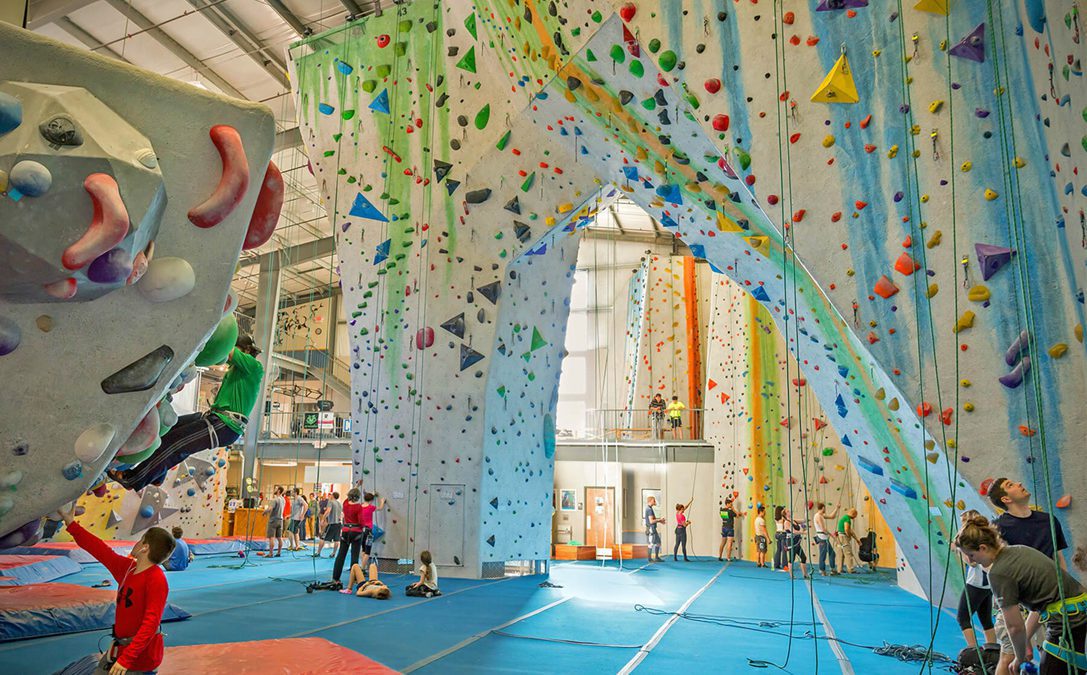Tips for Your Return to the Climbing Gym in Summer 2021
Climbers can finally return to the gyms in eastern Canada. Ease back to prevent injuries and retire old gear to stay safe

Across Canada, Covid-19 restrictions are lifting, and we’ll soon be back to some sort of pre-pandemic normal at climbing gyms. Ontario and Quebec climbers can finally return, so be sure to support your local gyms, even in the summer.
Has your harness been in a bag waiting to get back to the gym? Harnesses don’t last forever, so be sure to retire it when it’s time. A climbing harness should be retired if it shows signs of excessive wear, such as tears, fraying or other damage to the belay loop or the structural webbing of the harness. Even if your harness has been properly stored, and it shows no visible damage, you should retire it if it is more than seven years old.
For the best climbing harnesses for 2021 see here, and for the new Wild Country Mosquito harness (a great indoor harness) that wasn’t available at the time of the previous list see here.
If you’re new to indoor climbing, then you might have some questions, like what to where, how much chalk to bring and how your shoes should fit. We have you covered with beginner questions and answers here. And if you’re new to the gym, then you should brush up on the many unwritten rules, such as don’t wear your climbing shoes in the bathroom. For some not-posted-on-the-wall rules, see here.
Injuries can end your season, so don’t rush back to the gym hoping to jump on the grades you were crushing before Covid-19. Instead, warm-up, start easy and work back up to those hard redpoint. Below are some tips.
Fingers
Perhaps the most endangered and important part of the climber’s body are the fingers. Though tendons retain much of their tensile strength during rest, the muscles surrounding them will have atrophied. These muscles, the flexors and extensors of the forearm, become weaker after not climbing. Hangboarding does not absolve the athlete of this issue. Climbing allows these muscles an aerobic element that hangboarding does not provide. Your flexors are those muscles that allow your hand to contract, while your extensors are those muscles that allow your hands to open as you move between holds.
Though tendon strength is essential to holding grips, the muscles supporting the tendons take on a lot of that stress. Add to the strain that additional stress that comes from weaker shoulders, biceps, and core. The fingers are now hanging with the most pressure they have felt since your body was this weak. The only difference is that the fingers are likely stronger than the rest of your body. It can feel like pulling hard is just as easy as it always was. In some cases, a climber might feel even stronger due to the muscle weight lost during a relatively sedentary isolation. As such, it is important to return to climbing slowly. Four-by-fours or limit bouldering might feel like the best way to return to climbing, but taking the time to avoid injury is more beneficial. Injury is the quickest way to lose strength.
Knees
If a climber returns to heal-toe cams, heel-hooks, toe-hooks, and drop knees without rehabbing their leg strength, they may find their joints weakened and unstable. Additionally, falling is risky at the best of times. It is made more risky as a result of weak joints. You may have been able to take thick diggers before isolation, but perhaps a bit of rehab is required before returning to 30-foot whippers or slamming into crash pads.
Elbows and Wrists
We should appreciate that we may have attained a muscular imbalance. For climbers’ arms, that can mean large biceps compared to smaller triceps or large flexors compared to small extensors. When our biceps are unsupported by our triceps, we put additional load onto our elbows. Without maintenance, this leads to tendonitis in the elbow. Similarly, if we allow our flexor muscles to grow to an imbalanced degree, it puts unwanted stress on our wrists. In both cases, the stress results from constant strain, unbalanced by the weaker opposing muscle which should be working to keep the elbows and wrists pulled back into a neutral position.


